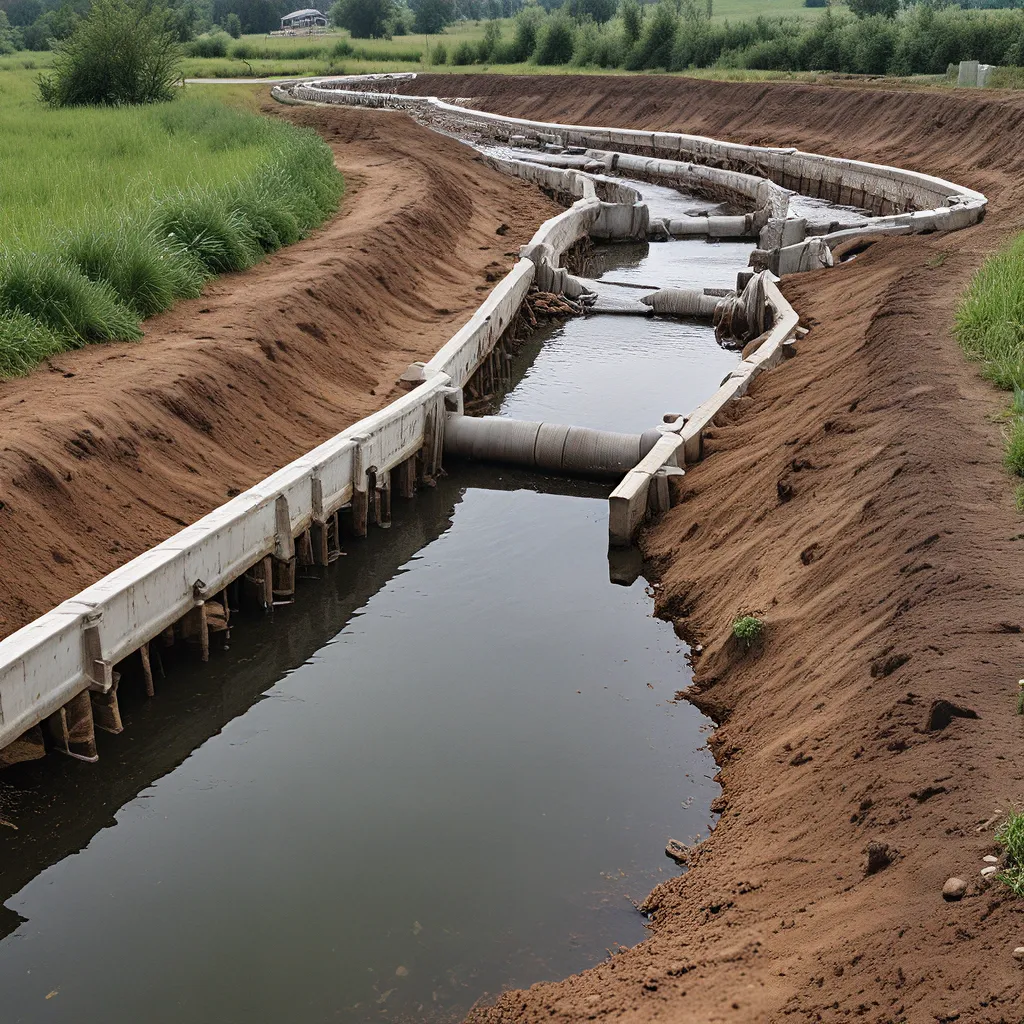
As someone who’s passionate about environmental sustainability, I’ve always been fascinated by the world of wastewater treatment. The idea that we can take what many consider “waste” and transform it into something valuable is just endlessly intriguing to me. And let me tell you, the innovations happening in this field are nothing short of remarkable.
The Rise of Bioconversion
These days, the bioconversion of organic waste is really taking center stage. Essentially, this involves using microorganisms like bacteria and fungi to break down materials like sewage sludge, food waste, and agricultural byproducts, and convert them into useful products like biofertilizers and biogas. It’s a process that not only reduces the environmental impact of waste, but also creates valuable resources in the process.
What’s really exciting is the sheer diversity of microbes being leveraged for these bioconversion processes. We’re talking about everything from Bacillus and Acidothiobacillus species to cyanobacteria and Aspergillus fungi. Each of these organisms brings something unique to the table – whether it’s the ability to degrade complex compounds, fix atmospheric nitrogen, or produce plant-growth-promoting compounds. And by using them in strategic combinations, we can create incredibly effective waste-to-value solutions.
Recent research has really shed light on the incredible potential of these microbial consortia. Studies have shown that by carefully selecting and engineering these “dream teams” of microbes, we can achieve remarkably efficient bioconversion of everything from agricultural waste to sewage sludge. The key is finding the right balance of enzymatic capabilities, nutrient cycling, and plant-growth-promoting attributes.
Harnessing the Power of the Microbiome
But it’s not just about the individual microbes – it’s about understanding the plant-microbe holobiont as an integrated ecological unit. You see, the rhizosphere (the soil immediately surrounding plant roots) is this incredibly dynamic and complex microbiome, teeming with all sorts of bacteria, fungi, and other critters. And by learning to manipulate this rhizospheric microbiome, we can unlock some truly game-changing strategies for sustainable agriculture and waste valorization.
Researchers have been exploring how to harness the power of these microbial communities to create biofertilizers – essentially, bioconverted organic waste products that can be used to enrich soil and promote plant growth. The idea is that by reintroducing a carefully curated suite of beneficial microbes back into the soil, we can support the natural cycles of nutrient uptake and cycling, while also boosting plant vigor and resilience.
And the best part? These biofertilizers aren’t just good for the plants – they’re also great for the environment. By recycling organic waste streams, we can reduce the amount of material that ends up in landfills or waterways, ultimately minimizing our overall ecological footprint. It’s a win-win-win situation if you ask me.
Strategies for Bioconversion Success
So, how exactly do these bioconversion processes work? Well, there’s a whole toolbox of techniques that researchers and waste management professionals are exploring. From submerged fermentation and solid-state fermentation to aerobic composting and microbial granulation, the options are truly diverse.
One particularly fascinating approach involves using a combination of these strategies, like aerobic composting with microbiological activation. The idea is to create the perfect conditions for the microbial community to thrive and work its magic, converting organic matter into stable, nutrient-rich biofertilizer products.
And the best part? These bioconversion techniques can be applied to a wide range of waste streams, from sawdust and agricultural waste to poultry bone meal and crustacean shell waste. It’s all about finding the right microbial cocktail to tackle the unique composition and characteristics of each material.
The Future of Wastewater Treatment
As exciting as all of this is, I know there’s still a lot we have yet to discover when it comes to the bioconversion of organic waste. After all, the microbial world is vast and complex, and we’re really just beginning to scratch the surface of its potential. But I’m confident that with continued research and innovation, we’re going to see some truly remarkable breakthroughs in the years to come.
In fact, I’m willing to bet that in the not-too-distant future, wastewater treatment facilities like Alpha Wastewater will be at the forefront of this bioconversion revolution. Imagine a world where every drop of wastewater is transformed into a valuable resource, where our organic waste streams are seen as a treasure trove of untapped potential. It’s an exciting prospect, and one that I can’t wait to be a part of.
So, if you’re as fascinated by this topic as I am, I’d encourage you to stay tuned. The future of wastewater treatment is bright, and it’s going to be a wild ride. Who knows what other surprises the microbial world has in store for us?